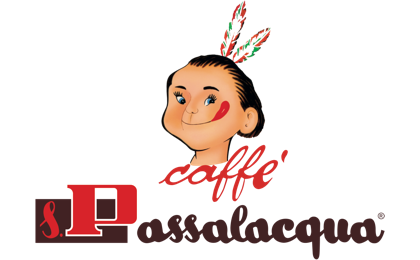Among the 80 species of Coffea plants in the Rubiaceae family, two are the most important ones commercially: Coffea Arabica, with oval green-blue beans, and Coffea Canephora with rounder and yellow or yellow-brown beans, known respectively as Arabica and Robusta.
The former is cultivated in numerous varieties (Typica, Mocha, Maragogype, etc.). It is native to the Ethiopian Highlands and makes up for about ¾ of the world production; it is highly prized and has a pleasant acidic fragrance. The Robusta, on the other hand, only comes in a few varieties and is, unlike the Arabica, more resistant to high temperatures, heavy rains and disease. It yields a more substantial cream and stronger taste than the Arabica.
In spontaneous growth, the coffee plant can reach up to 10 metres of height. In crops, however, it is grown to no more than three metres to facilitate harvesting. The coffee plant has fleshy lanceolate leaves combined with small white and fragrant flowers giving fruits that collect into bunches: these oval drupes develop from green into red and look a lot like cherries.
In order to make quality coffee, we need to look beyond the scholastic information regarding the coffee plant and more in depth into the characteristics of the product, love it when it is still green, learn to manage the techniques of cultivation and harvesting. This is the only way to make wise choices, make a difference and achieve excellence in each cup.
The long trip of coffee you are going to sip begins on the plantation, where we personally choose the cultivating countries to purchase from, based on strict but determining parameters to always ensure the best fruits for an excellent coffee.
The production area is the first element to define quality coffee. The richness of the soil, the irrigation, and the temperature are all key factors for cultivating superior quality coffee. This is why Passalacqua selects all the finest coffee-producing countries in the world to achieve many fine blends, all different from one another, to meet all the requirements of coffee lovers and their varied tastes.
The harvesting system used for the fruit is another important choice that defines the quality of the coffee. Not all drupes ripen simultaneously and, because they grow in clusters, it is not easy to pick out the ready ones. Beans that are still green would give blends a bitter taste. Those that are overripe, or fermenting, may impair coffee flavour.
This is why Passalacqua selects only harvests that are done by hand and not mechanised, using slower, more expensive but more precise methods, ensuring a harvesting of fruits that are ripe at the right point, the only ones capable of offering excellent fragrance and flavour after roasting.
Not everyone knows that after it has been picked, coffee is examined and classified according to the number of defects of the fruits. The choice of classification of coffee to be imported is a defining moment for any company because it means deciding whether or not to produce a higher quality coffee.
For this reason Passalacqua only chooses coffees of extraordinary quality, to ensure an always intense taste experience and a unique fragrance.
Passalacqua chooses the slower and most effective processing method even for post-harvesting treatment, one that is able to guarantee excellent coffee bean quality. We only buy coffee that is dried naturally in the sun: this technique, as opposed to one that uses automatic dryers, allows each grain to dry evenly, both inside and out, making sure only fruits with minimum internal moisture content remain, which are then able to face the long journey by ship.

